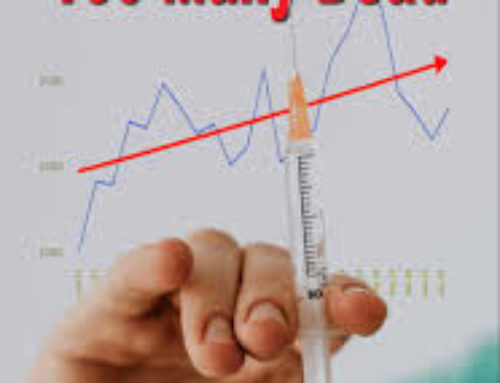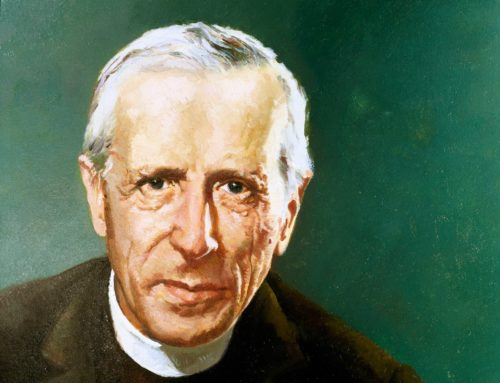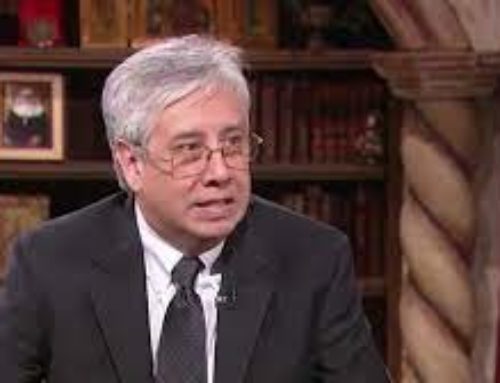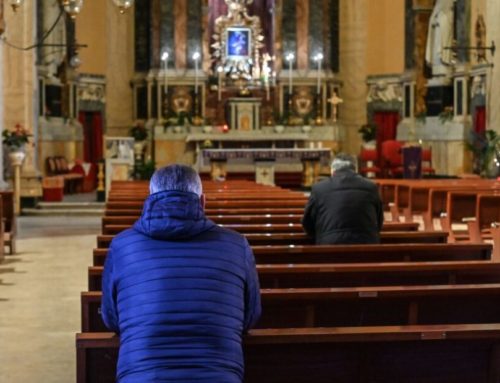JUL. 24, 2020
Disease Specialists Refute Report That Paints Churches as Breeding Grounds for COVID-19They point out that The New York Times article cited only a tiny percentage of known cases as stemming from religious gatherings and didn’t acknowledge the scope of preventive measures that are being implemented.Kate Scanlon
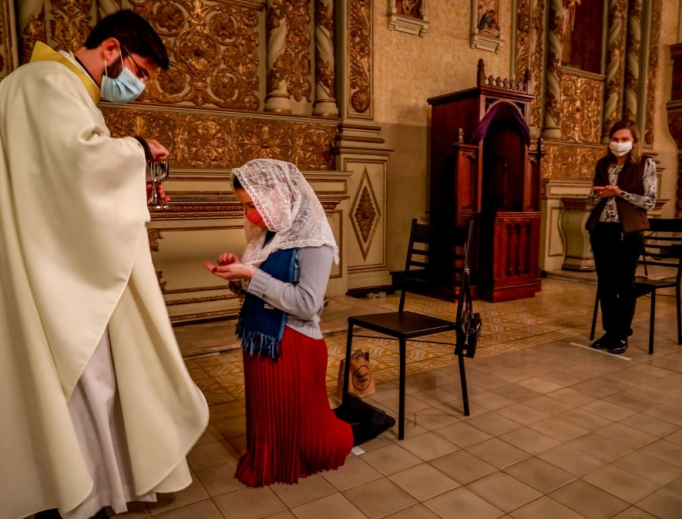
Father Lucas Mendes, wearing a protective face mask, gives Holy Communion to a worshipper during Mass at the Nossa Senhora das Dores Church in Porto Alegre, in southern Brazil, on May 29. American infectious-disease experts say that going to Mass is one of the safest activities amid the pandemic. (Silvio Avila/AFP via Getty Images)
WASHINGTON — Infectious-disease specialists refuted a report that stated that COVID-19 has “infiltrated Sunday services, church meetings and youth camps,” linking more than 650 cases in the United States to “religious facilities.”
The New York Times reported that “new outbreaks of the coronavirus are surging through churches across the country where services have resumed.”
Infectious-disease specialists told the Register that church services — where proper precautions are observed — are no more dangerous than other indoor activities.
Carlos del Rio, an infectious-disease expert at Emory University, said in the Times’ report that church gatherings are “an ideal setting for transmission. … You have a lot of people in a closed space,” del Rio said. “And they’re speaking loudly; they’re singing. All those things are exactly what you don’t want.”
However, two doctors contacted by the Register said that 650 cases — in a nation with more than 3 million confirmed cases — is a very small number, and key public-health practices, like wearing face masks and maintaining social distancing, can be the difference between spreading the virus and not.
‘Mass Is Essential’
The Thomistic Institute recently published guidelines that adopted World Health Organization and the U.S. Centers for Disease Control recommendations for the celebration of Mass and administration of the sacraments during the pandemic. The guidelines, which were prepared at the request of bishops, outline appropriate measures for each phase of the pandemic response.
Dr. Thomas McGovern, a former clinical research physician for the U.S. Army Medical Research Institute of Infectious Diseases and one of the authors of the guidelines, told the Register, “We believe that Mass is essential and that it can be done safely.”
“So we think it’s both of those things,” he said. “And we just want to give the bishops tools on how to do that.”
McGovern, a host of EWTN’s Doctor, Doctor radio program, said that wearing face masks and maintaining social distancing are the key components of celebrating Mass safely during the pandemic.
He said that attending Mass — with face masks and social distancing — is less dangerous than eating in a restaurant, because masks can be worn the majority of the time, most people are facing the same direction, and the space-per-person ratio allows for greater distance.
McGovern said that there are aspects of the Mass that should be adapted to prevent the spread of the virus, like singing.
“Choir singing is dangerous,” he said, adding that a cantor may sing safely either spaced far away from the congregation or protected by an object like a Plexiglas shield or a face mask. He added that there is not enough data about the congregation singing with masks, so he would not recommend it.
McGovern said it is important for Catholics to model responsible behavior not just to stop the spread of the virus, but because “we want to continue to be safe so that nobody can point their finger at churches, like The New York Times seemed to do, and say: ‘Look, you guys are dangerous; we have to stop your worship.’”
“We want to give them no reason to say that we are a source of multiple outbreaks,” he said. “And so far, we haven’t heard of any Catholic church being that, which is pretty remarkable, given the breadth of the Catholic Church in the United States.”
McGovern said efforts to categorize religious services as nonessential are missing a bigger picture.
“I think some people miss the fact that we are not just bodies, but we are bodies with an immortal soul, and that soul has a health that is connected to the body but also has some aspects that are different than just the body,” he said. “And so I think they’re just missing at least half of a reality, so they’ve got a big blind spot.”
He added that the “essential versus nonessential dichotomy” isn’t particularly helpful and encouraged people to think about activities in terms of “safe and unsafe.”
“That’s what makes more sense to me; then we don’t have to get into the value-laden thing of what is essential and nonessential,” he said.
McGovern also stressed that while wearing face masks will help prevent the spread of the virus, they must be worn properly, over both the mouth and nose.
“I see too many people wearing them with their nose exposed,” he said.
Infectious-Disease Expert
Dr. Paul Carson, an infectious-disease expert and professor of public health at North Dakota State University, told the Register that the 650 cases cited by The New York Times are “a drop in the bucket compared to the overall national cases.”
Carson, who serves on Fargo’s Red River Valley COVID-19 Task Force working on the strategy and response to the pandemic, added, “If you’re trying to figure out a place to target where to be focusing on our attention, I think churches would actually be lower on the list; but to have 650 cases out of the over 3 million we’ve had so far is really a small number.”
Carson agreed that with the appropriate precautions in place, Mass is safer than other indoor activities.
“If we do the precautions that have been recommended in terms of getting back to Mass, church is substantially safer than restaurants and certainly bars, and even possibly out shopping,” he said.
“A number of outbreaks are associated with restaurants, substantially more than with church activity, but you have people who aren’t masking by virtue of the fact that they are eating and drinking over a stretch of time in a confined space, which increases risk. In church, we can — if done right — space ourselves out, wear a mask, and those pose substantially less risk. I’d be much more concerned for myself in going to a restaurant or a bar than Mass.”
Carson said, “We have a growing body of data that suggests masking really works,” citing three case studies where masks on either the infected person or those around them seemed to prevent the spread of the virus in high-risk situations: an infected man who traveled on a plane without infecting other passengers, hairstylists who didn’t pass the virus on to their clients, and a patient who did not pass the virus on to medical staff in a hospital.
“I’m increasingly convinced that that’s our way to kind of stay free and mobile and out of this until a vaccine comes. And what I’d like to see is that we continue doing that in our church setting,” Carson said.
Carson called it “unfortunate” that mask usage varies from church to church.
“This is our path to be able to keep going to church,” he said. “We’ve got to get past this idea that it’s some kind of political statement. I think if we at least take this individual responsibility — you know, ‘Let’s just do this!’ — I am increasingly hopeful that’s our path to preventing outbreaks in clusters like Mass, which I think can be done safely.”
He also cautioned against normal singing in church for the time being, saying it emits more respiratory droplets than talking or breathing.
“We do emit a higher number of respiratory droplets when we sing,” he said, pointing to an outbreak of coronavirus traced to a choir practice in Washington state.
“I still would be pretty hesitant about the congregation singing or a cantor singing in front of the congregation,” he said, agreeing with McGovern that there is not enough data to indicate the efficacy of singing while wearing face masks.
Carson added that in a climate that permits it, celebrating Mass outdoors can help prevent the spread of the virus.
“There’s very few clusters or outbreaks associated with outdoor activity,” he said. “Outdoors, ambient air disperses respiratory droplets quickly and efficiently, so anything we can do outdoors is a great idea.”
Carson said he hopes decisions about worship services take into account concerns about physical and spiritual well-being.
“I think church, and the receiving of sacraments, and the engagement of our spiritual lives, is on a whole different level than hair salons, and bars and restaurants, and gyms, and so on,” he said. “The human person is far more than just the physical activities that we undergo, and to set aside the spiritual aspect of our lives as quote-unquote unessential, I think, is pointedly wrong.”
Carson said he is concerned about the impact of masks becoming polarized.
“It has been really interesting for me to observe even amongst my devout Catholic friends the fault lines in the polarization we see playing out in the country,” he said. “I have good Catholic friends who are thinking along the lines of ‘this is overblown,’ that masking is an encroachment on civil liberties; and then I have others that are afraid to go to Mass now because people aren’t taking it seriously. And I implore people: This is very real — and that masking in particular is an act of charity toward one another, solidarity toward one another. It seems kind of a weird thing to do and maybe a bit obnoxious, but in the short term, I see it as a means to keeping us out and active and able to go to Mass; and it’s an act of charity and solidarity, not something that should divide us and polarize us.”
Observing Protocols
Msgr. Charles Pope, pastor of Holy Comforter-St. Cyprian Catholic Church in Washington, D.C.’s Capitol Hill neighborhood, told the Register that he has been very careful to observe CDC protocols as public Masses resumed in the Archdiocese of Washington.
“We ask people to socially distance and to wear a mask,” he said. “Right now, the choir doesn’t come together to sing. I think we’re as safe as we can reasonably be, safer than a lot of other settings. Also, when we’re finished with Mass, we spray down the pews with a disinfectant spray like Lysol.”
As part of its pandemic response, the District of Columbia has limited religious gatherings to a maximum of 100 people. Msgr. Pope said that means there’s “plenty of room” to accommodate social distancing in his church, which can seat 700.
“I’m just so grateful to the faithful that they’re willing to wear the mask and to do those things,” he said. “We need to get people back in the door.”
Msgr. Pope said that in some cases churches have been subject to harsher regulations than bars or restaurants or other indoor venues, and that is “unfair.”
“There are legitimate things the state can ask so we don’t have big crowds, but if we can meet requirements that businesses can do, and if airplanes can be filled, at some point you have to say: We are not being treated with the same equity; there’s a disparity here,” he said.
Msgr. Pope urged the faithful to remember Christ’s instruction: “Do not be afraid.”
“Realize that we’re doing lots of things to keep the environment safe,” Msgr. Pope said, emphasizing that people who are at high risk for the virus or ill should continue to exercise prudence.
“Try to come to Mass if you can,” he said.
“Your soul is important.”
Kate Scanlon is a producer with EWTN News. She writes from Washington, D.C.
This story was updated after posting


